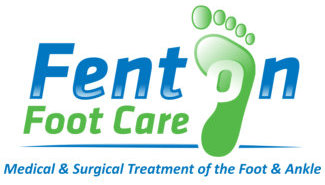What are some common issues that you see in runners?
I would say tendonitis, plantar fasciitis, and heel spurs are very frequent problem which runners suffer from. Due to limited time of this discussion I will focus on tendonitis as this is a painful condition that often frustrates many athletes because it tends to prevent them from being able to enjoy their activity and makes it difficult to maintain their fitness.
What is Tendonitis?
 Tendonitis is an inflammation and swelling of the muscle tendon, which is a connective tissue band that connects the muscle to the bone. Tendons cross the joints and move them up and down, so with every movement of the joint the tendon has to glide back and forth. Tendons are made of fibers and covered with a lining called a sheath that is filled with fluid that lubricates the tendon. The tendon sheath and fluid often become inflamed first, and without treatment the fibers of the tendon can be damaged long term and be more difficult to treat. If caught early, it can be fixed easily.
Tendonitis is an inflammation and swelling of the muscle tendon, which is a connective tissue band that connects the muscle to the bone. Tendons cross the joints and move them up and down, so with every movement of the joint the tendon has to glide back and forth. Tendons are made of fibers and covered with a lining called a sheath that is filled with fluid that lubricates the tendon. The tendon sheath and fluid often become inflamed first, and without treatment the fibers of the tendon can be damaged long term and be more difficult to treat. If caught early, it can be fixed easily.
How will I know if I am developing tendonitis?
Pain or swelling is the first sign. Runners with tendonitis often have mild pain as they begin their jog, and while the discomfort might improve as the tendon stretches, it will usually return as intense discomfort and swelling causing them to end the workout early. Pain or tenderness when the tendon is squeezed along its edge is also not uncommon. The old mantra of “no pain, no gain” can be dangerous when it comes to tendonitis. Inflamed tendons can lose their organized fiber structure and develop microscopic ruptures which fill with scar tissues over time.
What causes Tendons to get hurt?
Rapid tendon pain and swelling can occur after one specific injury which causes a partial or total tearing of the tendon fibers; this is a serious condition which needs prompt treatment. More commonly, though, tendonitis occurs as a result of repeated small stresses on the tendon, which result in an irritation of its fluid or sheath coating. Repetitive stresses happen when joints are misaligned and running causes excessive stress on the tendons. This can happen with improper shoes, or structural deformities of the foot like a “flat foot” and excessive movement of a joint with activity.
Which tendons are prone to inflammation in the foot and ankle?
There are actually eleven different tendons which cross the ankle joint on each limb. While any one of them can suffer from inflammation and pain, the most common tendon which causes problems for runners is the Achilles tendon at the back of the heel. Also, the Posterior Tibial Tendon at the inside of the ankle or the Anterior Tibial Tendon at the front of the ankle joint often get overused, and this is known as “shin splints.”
Can tendonitis be prevented?
Yes. Maintaining balanced muscle strength and flexibility of the tendons and ligaments is the simplest way to minimize tendon injury. In addition, we find that proper shoe selection based on each individual’s foot alignment is very important in order to neutralize the stresses of running. There is no one shoe that is perfect for everyone; each foot structure needs a different supportive shoe. Additionally, the correct custom functional orthotic device, made by taking a mold of the patient’s foot in our office, helps greatly. The functional orthotic is modified based on the foot structure and support, and it becomes a great addition to proper shoes among avid runners because the orthotic aids greatly in supporting the stresses which will fatigue the tendons and cause tendonitis. I do not recommend the typical cushion soft gel drug store type insole. Those lack support, and tendonitis is caused by lack of support – not lack of cushion.
How long does it take for tendonitis to go away?
We find that each case is varied based on how long the runner has suffered from tendonitis. It also depends on whether the disease is based in the tendon’s fibers or its lining and surrounding fluids. An imaging examination such an ultrasound test done in our office can help us determine if there is damage to tendon or just inflammation of the sheath of the tendon. If we catch the inflammation early, fast recovery can be achieved. I always tell my patients don’t wait for it to get worse before seeking treatment.
Then how can tendonitis be fixed?
In our office, we like to utilize multiple treatments at once to speed the healing of tendonitis. In the short term, we need to immediately control the pain and swelling to get the athletes back to doing what they enjoy. This usually involves using combinations of medicines, therapy, as well as temporary taping or bracing devices. However, the most important long term factor is getting the foot, ankle, and leg mechanics and function analyzed so that we can figure out why the problem began. If that’s not done, then chances are high that tendonitis will be a recurrent issue and a major frustration for the runner. Once we figure out what is misaligned or weakened, we can focus treatment on that issue to fix the problem long term.
Download this article by clicking here


